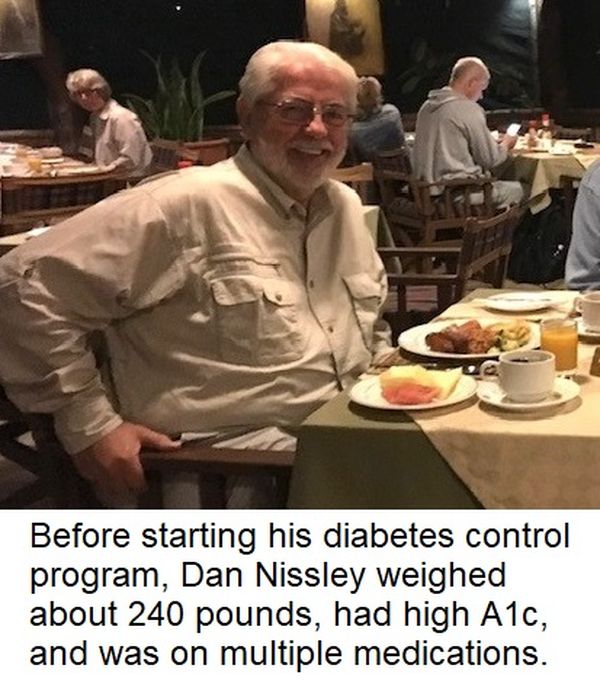|
|
By Capital Blue Cross – THINK (Trusted Health Information, News, and Knowledge) is a community publication of Capital Blue Cross. Our mission is to provide education, resources, and news on the latest health and insurance issues.
A new approach for dealing with diabetes has helped Dan Nissley lose weight, reduce his A1c level, lower his blood pressure, and reduce his medications. Here’s how he did it.
Dan Nissley was in his 40s when his doctor told him he had Type 2 diabetes. The diagnosis was a surprise to Nissley, given he had no family history of the disease and no typical risk factors aside from having some struggles maintaining a healthy weight.
“For years since then, I had been told by my doctors that that there is no cure – that I would always be a diabetic,” said Nissley, now 76. “I assumed taking medications to control it was the best I could expect.”
But in August 2022, Nissley received a mailing from Capital Blue Cross about a new approach for dealing with diabetes – one that even made reversing Type 2 diabetes a possibility. Instead of focusing on regulating blood sugar through medications, as many diabetes treatments do, this program focused on improving metabolic health through a low-carb, high-fat diet that works to normalize blood sugar and reduce the need for medication.
At first, Nissley was skeptical.
“I’ve tried numerous things over the years to lose weight and improve my health, but none of them really stuck, so I didn’t have great expectations,” he said. “But it was offered at no additional cost with my Capital coverage, so I thought I have nothing to lose by trying.”
What he lost was more than 50 pounds – dropping his weight from 235 pounds to 182 over nine months. He also saw his A1c level plunge from 7.3% to 5.7%. Diabetes is diagnosed when the A1c level (a measure of average blood glucose level over 2-3 months) is 6.5% or higher, according to the American Diabetes Association.
As a result of these health improvements, Nissley has been able to safely reduce his daily medications for diabetes and eliminate his blood pressure medication.
“Physically, I feel a lot different,” Nissley said. “My knees and ankles aren’t complaining from all that extra weight like they did before. My waist size has gone from 46 inches to 38 inches.”
Like many who try to change their eating habits, Nissley was concerned about whether he could move away from the carbohydrate-rich foods he loved to a ketogenic diet that naturally reduces blood sugar.
“My wife and I did not expect to enjoy a keto diet, but we’ve been amazed at how good the food is,” Nissley said. “We keep a three-ring binder full of recipes and we add to it almost daily. It is certainly not a hardship for us to eat this way.” (Nissley’s wife is not diabetic, but decided to follow his nutrition regimen so they could share meals.)
To help Nissley stick to his diabetes control regimen, he has access to a nurse specially trained to guide him. The nurse receives daily updates on Nissley’s weight and blood pressure and can quickly counsel him if it looks like his numbers are moving in the wrong direction. The program also offers optional support groups so others battling diabetes can share their insights and advice.
The result has been life changing for Nissley, helping him fight back against a disease that has affected him for nearly half his life.
“Diabetes was something I just assumed I had to learn to live with,” Nissley said, “and now there’s a real possibility I can live without it.”
You can find more useful articles at https://thinkcapitalbluecross.com/
Information provided to TVL by:
JERRY REIMENSCHNEIDER
Senior Public Relations Specialist | Brand & Market Strategy
https://www.capbluecross.com/









